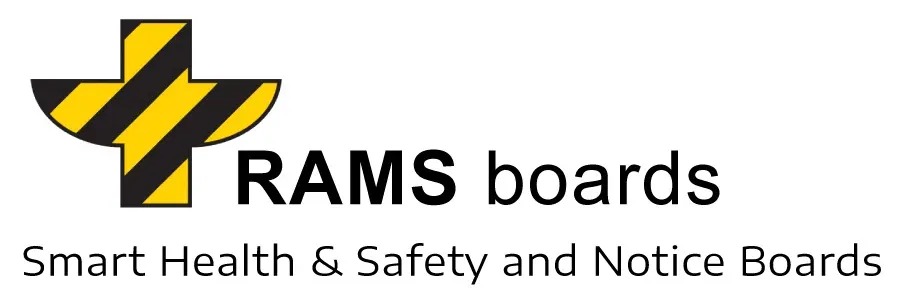RAMS boards play a crucial role in facilitating emergency response on construction sites, acting as versatile and adaptable tools that can be tailored to meet the specific emergency response needs of a project or company. Their functionality in emergency situations can be broken down into several key aspects:
- Customizable for Specific Emergency Needs: RAMS boards are highly adaptable and can be equipped with various components to suit different emergency response systems. This flexibility allows project officers to tailor the boards to the specific requirements of their site, whether it involves fire safety, medical emergencies, or other crisis situations.
- Hosting Emergency Procedures and Documents: One of the primary functions of RAMS boards in an emergency is to serve as a holder for vital emergency documents and procedures. This can include evacuation plans, emergency contact numbers, first aid procedures, and location maps for emergency equipment. Having these documents readily accessible and in a central location ensures quick reference during critical situations.
- Integration with Alarm Systems: RAMS boards can be equipped with alarm systems, either as individual units or as part of a larger, integrated system. These alarms can be crucial in alerting workers to an emergency, facilitating a swift and organized response.
- Enhanced Visibility for Quick Action: The design and placement of RAMS boards ensure that they are highly visible and easily accessible. In an emergency, this visibility is key to ensuring that workers can quickly locate and utilize the information and equipment they need.
- Role in Emergency Communication: RAMS boards can also play a significant role in emergency communication. They can be used to display real-time updates, instructions, or changes in emergency protocols, keeping all workers informed during an evolving situation.
- Supporting a Coordinated Response: By providing a centralized point for emergency information and equipment, RAMS boards support a more coordinated and efficient response to emergencies. Workers know exactly where to go for information and resources, which helps in reducing confusion and reaction time during critical moments.
- Durability in Various Conditions: Constructed to withstand different environmental conditions, RAMS boards ensure that emergency information and equipment are protected and accessible even in harsh weather conditions, which is often crucial in outdoor construction environments.
- Tailored to Site-Specific Risks: Every construction site has its unique risks and challenges. RAMS boards can be customized to address these specific risks, whether it’s by highlighting particular hazards, providing specialized emergency equipment, or focusing on site-specific emergency procedures.
In conclusion, RAMS boards facilitate emergency response by being customizable to specific emergency needs, hosting essential procedures and documents, integrating with alarm systems, providing enhanced visibility, aiding in emergency communication, supporting coordinated responses, being durable under various conditions, and being tailored to site-specific risks. The effective use of RAMS boards in emergency situations largely depends on how the project or company officer chooses to utilize them, adapting them to the specific environment and requirements of the construction site.
